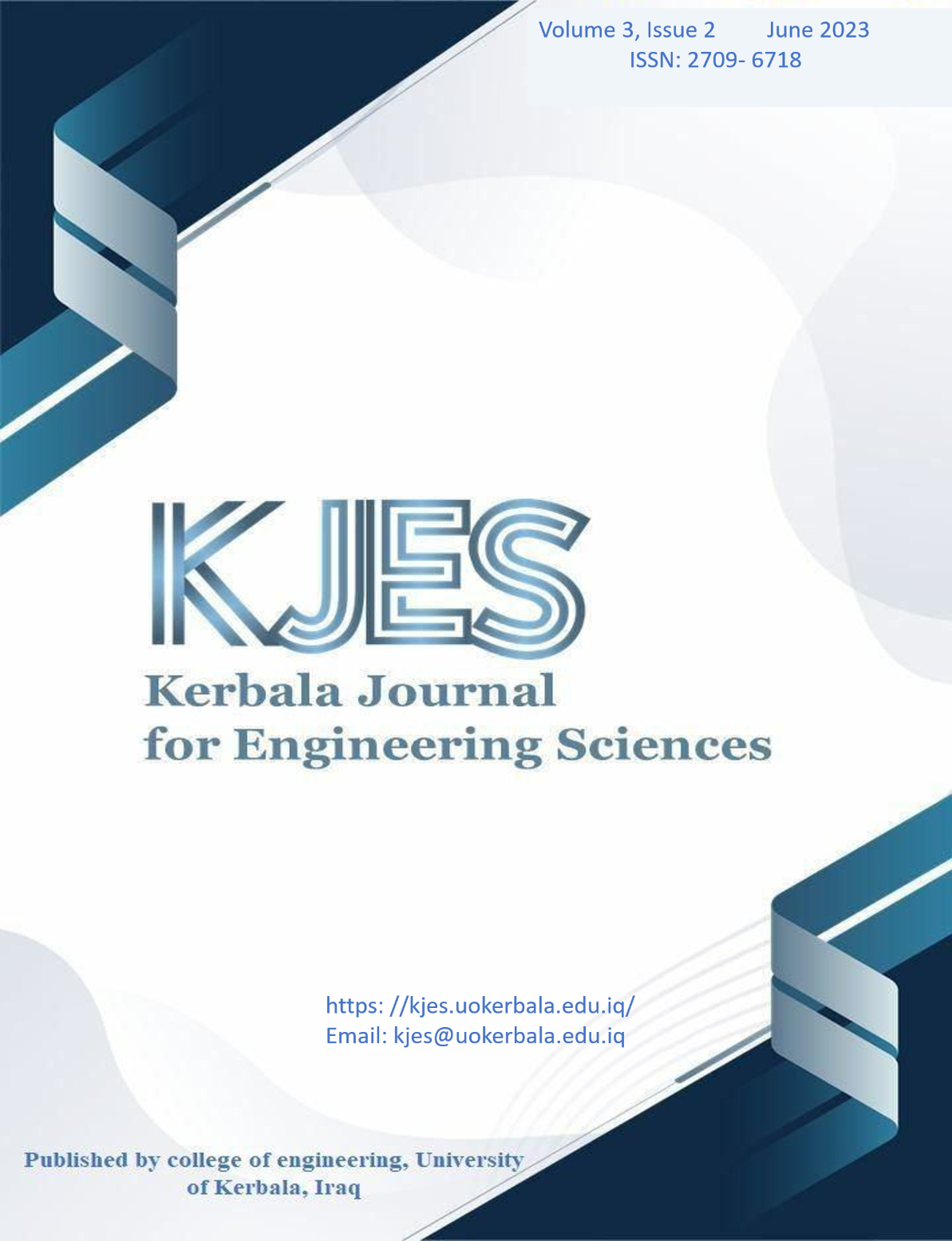Abstract
The drilling operation was found in the early time of modern technology due to the
importance of this operation in manufacturing. The drilling operation was developed to meet the
requirements of modern industry. The study of factors that influence the drilling operation is very
important to develop and enhance the performance of drilling tools and machining. The objective
of this study is to prove the closeness between experimental and FE works to measure the
temperature in a specified point on the workpiece. This closeness will be evidence of the reliability
of FE temperatures to extract the linear and nonlinear expressions in the SPSS program. For
experimental work, a 10mm diameter drill bit of 118ᴼ point angle was used to make three drilling
operations by using a radial drilling machine. Three cutting speeds of (100-200-300) rpm, with
fixed feed rate and drilling depth as 0.15mm/rev, and 3mm, respectively. The experimental
operations are included in the FE study for validation. For numerical study, 3D simulations based
on the FE method by using Deform-3D Ver.11 commercial software were executed to explain the
influence of drilling parameters as well as drill bit point angle on the temperature generated in the
workpiece material in dry drilling of AISI 304 stainless steel. Two drill bits of HSS have been used
in this study with 10mm diameter and these tools are different in point angle of 110° and 118°,
respectively. The drill bits are imported from a specific website in the format of STL. The
workpiece modeling shape is cylindrical with a diameter of 50mm and 5mm thickness. The cutting
parameters include three cutting speeds as (100, 200, and 300) rpm, and three feed rates as (0.15,
0.25, and 0.35) mm/rev, and the depth of drilling is constant for all operations as 3mm. The results
ISSN: 2709-6718
Vol. 02, No. 2 (2022)
provided a good closeness between experimental and their FE operations and the decision was to
assume the FE temperatures reliable, and qualified to be used in SPSS work. The results showed
that the temperature generated in the machined models increased with speed for both tools and the
temperature generated by the tool of 118° point angle is higher than the temperature generated by
the tool of 110° point angle. The influence of feed rate was also investigated. There was a good
closeness between FE temperatures and nonlinear regression ones which indicated to consider the
temperature variation as nonlinear in this study.
importance of this operation in manufacturing. The drilling operation was developed to meet the
requirements of modern industry. The study of factors that influence the drilling operation is very
important to develop and enhance the performance of drilling tools and machining. The objective
of this study is to prove the closeness between experimental and FE works to measure the
temperature in a specified point on the workpiece. This closeness will be evidence of the reliability
of FE temperatures to extract the linear and nonlinear expressions in the SPSS program. For
experimental work, a 10mm diameter drill bit of 118ᴼ point angle was used to make three drilling
operations by using a radial drilling machine. Three cutting speeds of (100-200-300) rpm, with
fixed feed rate and drilling depth as 0.15mm/rev, and 3mm, respectively. The experimental
operations are included in the FE study for validation. For numerical study, 3D simulations based
on the FE method by using Deform-3D Ver.11 commercial software were executed to explain the
influence of drilling parameters as well as drill bit point angle on the temperature generated in the
workpiece material in dry drilling of AISI 304 stainless steel. Two drill bits of HSS have been used
in this study with 10mm diameter and these tools are different in point angle of 110° and 118°,
respectively. The drill bits are imported from a specific website in the format of STL. The
workpiece modeling shape is cylindrical with a diameter of 50mm and 5mm thickness. The cutting
parameters include three cutting speeds as (100, 200, and 300) rpm, and three feed rates as (0.15,
0.25, and 0.35) mm/rev, and the depth of drilling is constant for all operations as 3mm. The results
ISSN: 2709-6718
Vol. 02, No. 2 (2022)
provided a good closeness between experimental and their FE operations and the decision was to
assume the FE temperatures reliable, and qualified to be used in SPSS work. The results showed
that the temperature generated in the machined models increased with speed for both tools and the
temperature generated by the tool of 118° point angle is higher than the temperature generated by
the tool of 110° point angle. The influence of feed rate was also investigated. There was a good
closeness between FE temperatures and nonlinear regression ones which indicated to consider the
temperature variation as nonlinear in this study.
Keywords
Deform-3D
drilling
FEM
High-Speed Steel
Machining
Simulation
SPSS
Stainless Steel AISI 304
Statistical analysis
Keywords
التصنيع، الحفر، المحاكاة، الفولاذ عالي السرعة، الفولاذ المقاوم للصدأ، التحليل الاحصائي
